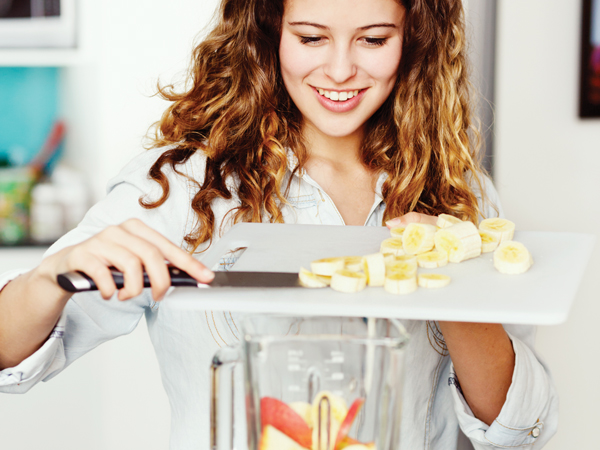Ask the Experts: Getting more fruits and vegetables into baby's diet
Q: What are some easy ways to incorporate more fruits […]
 Q: What are some easy ways to incorporate more fruits and veggies into our 12-month-old’s diet? I’m afraid she’s been filling up too much on Cheerios and crackers.
Q: What are some easy ways to incorporate more fruits and veggies into our 12-month-old’s diet? I’m afraid she’s been filling up too much on Cheerios and crackers.A: I always recommend children have a variety of color on their plates at every meal. At 12 to 23 months, a child should be eating 1 cup of fruit and 3⁄4 cup of vegetables per day. Hard, raw pieces of fruit and vegetables could pose a choking risk for small children, so fruits and veggies should be cut into soft small pieces, about a quarter of an inch.
Fresh or frozen fruit is always better than fruit juice or fruit in sugary syrup. Good fruit choices include soft bananas, peaches, pears, mangos, watermelon, cantaloupe, diced blueberries and small pieces of prunes. Children should be offered a variety of different vegetables, too, including green, red and orange varieties. Little ones are naturally drawn to sweet flavors (breast milk and formula taste sweet) and will have a tendency to prefer the sweeter orange vegetables, such as carrots, squash and sweet potatoes. But don’t give up on offering green veggies (green beans, kale, spinach) as well!
Besides serving the fruit and veggies by themselves (so your tot will learn to like their natural flavors), try fruit and vegetable smoothies made with whole milk yogurt or Greek yogurt, fruit “ice cream” made by blending a frozen banana until creamy with another frozen fruit, roasted fruit which boasts a richer flavor (roasted pears and bananas are delicious and make great snacks), muffins made with fruit (apple zucchini muffins, banana muffins), and natural fruit and veggie ice pops (strawberry spinach, mango, kale) are all good options.







